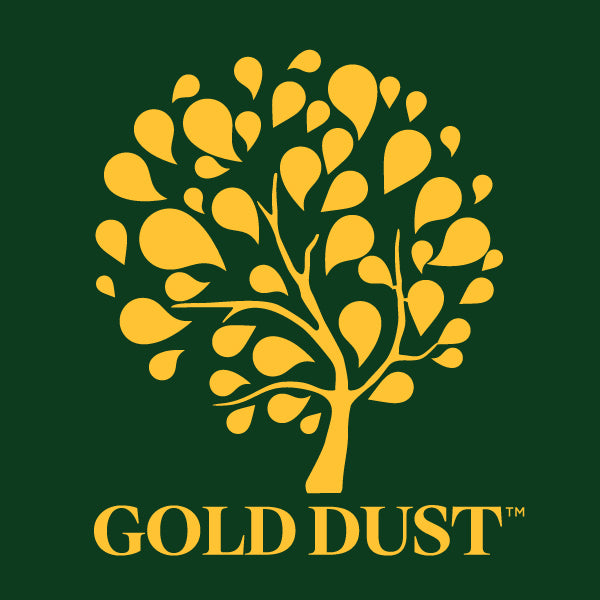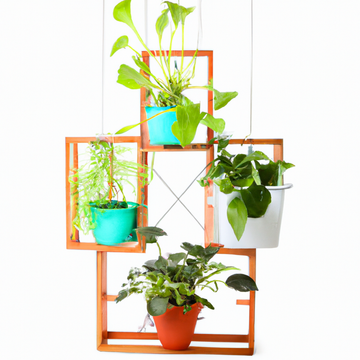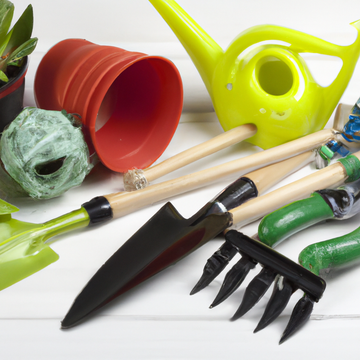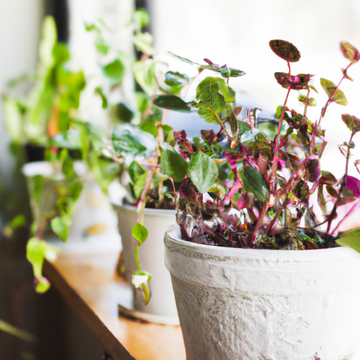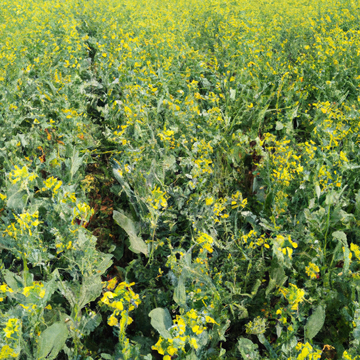From Seed to Harvest: How Geo Fabric Grow Bags Revolutionize Plant Care
by GOLDDUST- Rethink&Revive on Jul 30, 2023
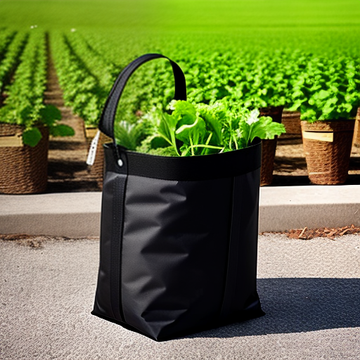
Welcome to the future of plant care! If you're tired of traditional plant pots and their limitations, it's time to discover the revolutionary world of geo fabric grow bags. These ingenious containers are changing the game for gardeners everywhere, offering a host of benefits that will transform your gardening experience. From improved drainage and healthier root growth to increased portability and versatility, geo fabric grow bags are taking horticulture by storm. In this blog post, we'll take you on a journey from seed to harvest as we explore how these innovative bags work, why they're superior to traditional pots, and how you can optimize their use for your plants' well-being. So buckle up and get ready to revolutionize your green thumb with geo fabric grow bags!
What are geo fabric grow bags?
Geo fabric grow bags, also known as smart pots or fabric pots, are a game-changing alternative to traditional plant pots. Unlike their rigid counterparts, these bags are made from a breathable and durable geotextile fabric that promotes healthy root development and enhances overall plant growth. The fabric allows for better air circulation around the roots, preventing them from becoming waterlogged or suffocated.
One of the key features of geo fabric grow bags is their excellent drainage system. The porous material allows excess water to easily drain through the sides of the bag, preventing issues like root rot and overwatering. This ensures that plants receive an optimal balance of moisture while avoiding stagnant conditions that can harm their health.
Another advantage of using geo fabric grow bags is their portability. These lightweight containers make it easy to move your plants around, whether you want to follow the sunlight throughout the day or rearrange your garden layout. They're also collapsible and easy to store when not in use.
Additionally, geo fabric grow bags offer superior insulation compared to traditional pots. During hot weather, the breathable material helps regulate soil temperature by allowing heat to escape through evaporation. In colder climates, they provide some level of protection against frost damage by insulating roots from extreme temperatures.
Geo fabric grow bags provide a multitude of benefits for both beginner and experienced gardeners alike. Their innovative design fosters healthier root systems and improved plant growth while offering convenience and versatility in gardening practices.
How do geo fabric grow bags work?
These innovative plant containers are made from a breathable and durable geotextile fabric that allows air and water to circulate throughout the roots of your plants. Unlike traditional pots, which can restrict root growth and lead to issues like root rot, geo fabric grow bags promote healthier root development.
The porous nature of the fabric also prevents overwatering by allowing excess moisture to drain away, preventing waterlogged soil. This not only helps prevent disease but also ensures that oxygen reaches the roots, promoting optimal growth.
Additionally, geo fabric grow bags provide insulation for the plants' roots during hot or cold weather. The breathable material helps regulate soil temperature, protecting delicate roots from extreme heat or frost.
Another advantage of using geo fabric grow bags is their versatility. They can be used in various settings such as gardens, patios, balconies, or even indoors. You can hang them up on walls or fences for vertical gardening or place them directly on the ground.
These unique plant containers work by providing excellent drainage and airflow to promote healthy root growth while also offering insulation and adaptability for different planting environments.
Geo fabric grow bags vs. Traditional plant pots
When it comes to choosing the right container for your plants, geo fabric grow bags offer a multitude of benefits over traditional plant pots. Let's take a closer look at how these two options compare.
First and foremost, one of the biggest advantages of using geo fabric grow bags is their superior drainage system. Unlike traditional pots that can lead to waterlogged soil, the permeable fabric allows excess moisture to escape easily. This helps prevent root rot and ensures optimal growing conditions for your plants.
Another key difference lies in air circulation. Geo fabric grow bags provide excellent airflow around the roots, promoting healthy oxygen exchange and preventing issues like mold or mildew growth. In contrast, traditional pots can sometimes restrict airflow, leading to stagnant conditions that may hinder plant growth.
Additionally, geo fabric grow bags are incredibly lightweight and portable compared to bulky ceramic or plastic pots. This makes them ideal for urban gardeners with limited space or those who frequently move their plants indoors or outdoors based on weather conditions.
Furthermore, because geo fabric grow bags encourage "air pruning" – where roots naturally stop growing once they reach the edges of the bag – they help promote robust root systems without becoming pot-bound like plants in traditional containers often do. This results in healthier overall plant growth and better nutrient absorption.
Cost-effectiveness is worth considering. Geo fabric grow bags tend to be more affordable than many traditional pots on the market today while still offering durability and longevity.
Choosing the right size and type of geo fabric grow bags for your plants
Choosing the right size and type of geo fabric grow bags for your plants is an essential step in ensuring their health and productivity. These innovative bags come in a range of sizes, allowing you to select the perfect fit for each plant.
When choosing the size of your grow bag, consider the mature size of your plant. You'll want to provide enough space for the roots to spread out comfortably without overcrowding. It's generally recommended to choose a bag that is at least 2-3 times larger than the current root ball.
Additionally, consider factors such as portability and durability when selecting grow bags. Some models come with handles or straps, making it easier to move them around as needed. Look for high-quality materials that can withstand outdoor elements and multiple growing seasons.
Taking the time to choose the right size and type of geo fabric grow bags will set your plants up for success from seedling to harvest.
The best plants to grow in geo fabric grow bags
When it comes to selecting the best plants to grow in geo fabric grow bags, the options are virtually limitless. These innovative bags provide an ideal environment for a wide variety of plants, making them suitable for both indoor and outdoor gardening.
One popular choice is herbs. Whether you have a small balcony or limited space in your kitchen, growing herbs in geo fabric grow bags can be a game-changer. Basil, mint, parsley, cilantro, and chives thrive in these bags and are perfect for adding freshness to your meals.
Vegetables such as tomatoes and peppers also flourish in geo fabric grow bags. Their deep root systems benefit from the excellent drainage provided by the breathable fabric material. You can enjoy homegrown produce even if you don't have a traditional garden plot.
Flowering plants like marigolds, petunias, and geraniums add vibrant colors to any space when grown in geo fabric grow bags. The porous fabric allows air circulation around their roots while preventing waterlogging that could lead to rotting.
For those who prefer greenery indoors, houseplants like pothos, snake plant (Sansevieria), Chinese evergreen (Aglaonema), or ferns can be successfully cultivated in these versatile containers too.
The possibilities are endless when it comes to choosing plants for your geo fabric grow bags! From herbs and vegetables to flowers and houseplants – there's something for everyone. Get creative with your choices and enjoy the benefits of this revolutionary gardening solution!
Step-by-step Guide to Planting in Geo Fabric Grow Bags
1. Choose the Right Size and Type:
Before you start planting, make sure you have the appropriate size and type of geo fabric grow bags for your plants. Consider the mature size of your plants and choose a bag that provides enough space for their roots to grow.
2. Fill the Bag with Potting Mix:
Fill the grow bag about three-quarters full with a nutrient-rich potting mix. Avoid using garden soil as it may not provide adequate drainage.
3. Make Holes for Plants:
Using your hands or a small trowel, create holes in the potting mix where you want to place your plants. The number of holes will depend on how many plants you plan to grow in each bag.
4. Place Plants in Holes:
Gently remove each plant from its container and place it into the prepared hole, ensuring that the top of the root ball is level with or slightly above the surface of the potting mix.
5. Firmly Press Soil Around Roots:
Once all your plants are positioned, gently firm up around their roots by pressing down on the soil around them. This helps stabilize them and ensures good contact between their roots and soil.
6. Water Thoroughly After Planting:
After planting, give your newly potted plants a thorough watering until water drains out from below. This helps settle down any air pockets in the potting mix while providing essential moisture for healthy growth.
7. Maintain Adequate Moisture Levels:
Monitor moisture levels regularly and water when needed to keep soil consistently moist but not waterlogged or dry as dust.
8. Carefully Monitor Drainage:
Geo fabric grow bags promote excellent drainage due to their porous material but ensure excess water can drain freely without pooling at bottom by placing saucers beneath if necessary
How to care for plants in geo fabric grow bags
Caring for plants in geo fabric grow bags is simple and effective. These innovative bags provide excellent drainage, which means you won't have to worry about overwatering your plants. However, it's still important to water them regularly, especially during hot summer months.
When watering your plants in geo fabric grow bags, make sure to thoroughly saturate the soil until water starts dripping out of the bottom. This ensures that the roots receive enough moisture without sitting in standing water.
During dry spells or periods of high heat, you may need to water more frequently. Keep an eye on the moisture level of the soil by sticking your finger about an inch deep into the bag. If it feels dry at that depth, it's time to give your plants a drink.
In addition to watering, regular fertilization is crucial for healthy plant growth. Since nutrients can leach out faster from grow bags compared to traditional pots, it's important to supplement with organic fertilizer every few weeks during the growing season.
Pruning and trimming are also essential components of plant care in geo fabric grow bags. Remove any dead or yellowing leaves as well as spent flowers or fruits regularly to promote new growth and improve overall appearance.
Be mindful of pests and diseases that can affect your plants. Inspect them regularly for signs of infestation or infection and take appropriate measures such as using organic insecticides or fungicides if necessary.
With proper care and attention, your plants will thrive in their geo fabric grow bags!
Watering and drainage tips for geo fabric grow bags
Watering and drainage are crucial aspects of caring for plants in geo fabric grow bags. The unique design of these bags allows for excellent airflow and water drainage, but it's still important to follow some watering tips to ensure optimal plant health.
It's essential to water your plants regularly. Geo fabric grow bags tend to dry out faster than traditional pots due to their breathable material. Check the moisture level of the soil frequently and adjust your watering schedule accordingly. Remember, consistency is key!
When watering, aim for a slow and thorough soak rather than quick bursts of water. This helps promote deep root growth and prevents water from pooling on the surface. Allow excess water to drain fully before placing the bag back in its desired location.
Consider using a drip irrigation system or a self-watering mechanism if you're worried about maintaining consistent moisture levels in your geo fabric grow bags. These can be especially helpful during hot summer months when plants may require more frequent watering.
Additionally, pay attention to the specific needs of each plant species you're growing in geo fabric grow bags. Some varieties prefer slightly drier conditions while others thrive with consistently moist soil. Adjust your watering routine accordingly based on individual plant requirements.
By following these simple watering and drainage tips, you'll create an ideal environment for your plants in geo fabric grow bags – one that promotes healthy growth while preventing issues such as overwatering or poor drainage!
Fertilizing and maintaining plants in geo fabric grow bags
Fertilizing and maintaining plants in geo fabric grow bags is an essential part of ensuring their healthy growth and productivity. The porous nature of the fabric allows for excellent air circulation, preventing waterlogging that can lead to root rot. Additionally, the fabric promotes good drainage, preventing excess moisture buildup.
When it comes to fertilizing your plants in geo fabric grow bags, organic options are often preferred. Organic fertilizers provide a slow release of nutrients, promoting steady growth without the risk of chemical burn or over-fertilization. Compost or well-rotted manure can be mixed into the soil before planting or used as a top dressing throughout the growing season.
Regular watering is crucial for plants in geo fabric grow bags but be mindful not to overwater. The porous nature of the bag allows for better evaporation and prevents water from pooling at the bottom. It’s important to monitor moisture levels by regularly checking soil dampness with your finger.
To maintain healthy plants, regular pruning is necessary to remove dead or diseased leaves and promote airflow within the bag. This helps prevent pests and diseases from taking hold while allowing sunlight to reach all parts of the plant.
Mulching around your plants can also help conserve moisture and suppress weed growth. Organic mulch such as wood chips or straw provides additional nutrients as it breaks down over time.
Proper fertilization combined with regular maintenance practices will ensure optimal plant health when using geo fabric grow bags. By providing adequate nutrition, monitoring moisture levels, pruning when needed, and using mulch appropriately, you'll create an ideal environment for your plants to thrive!
Conclusion
Geo fabric grow bags are a game-changer when it comes to plant care. Their unique design and functionality provide numerous benefits that make them superior to traditional plant pots. From better root development and improved drainage to enhanced air circulation and temperature regulation, these grow bags truly revolutionize the way we nurture our plants.
When selecting the right size and type of geo fabric grow bags for your plants, consider their specific requirements in terms of space, water retention, and support. It's important to choose a size that allows enough room for roots to spread while also ensuring proper drainage.
A wide range of plants can thrive in geo fabric grow bags, including vegetables, herbs, flowers, and even small trees or shrubs. Their versatility makes them suitable for both indoor and outdoor gardening.
Planting in geo fabric grow bags is relatively easy with just a few simple steps. Ensure you have quality potting mix suited for your specific plants' needs. Follow the instructions on seed packets or nursery labels regarding depth and spacing when planting seeds or transplanting seedlings into the grow bag.
Caring for plants in geo fabric grow bags involves providing adequate watering as per individual plant requirements. The breathable nature of these bags helps prevent overwatering while allowing excess moisture to drain away efficiently.
Fertilizing is crucial for maintaining healthy growth in plants grown in geo fabric grow bags. Regularly feed your plants with an appropriate organic fertilizer according to their specific nutritional needs.
Remember that each plant has its own unique care requirements—some may need more sunlight than others; some may prefer slightly acidic soil while others thrive best in alkaline conditions. Stay attuned to the needs of your plants by monitoring their growth progress closely.
So why wait? Embrace this innovative approach to gardening by incorporating geo fabric grow bags into your horticultural routine! Your plants will thank you with vigorous growth, bountiful harvests, and vibrant beauty like never before. Happy gardening!
